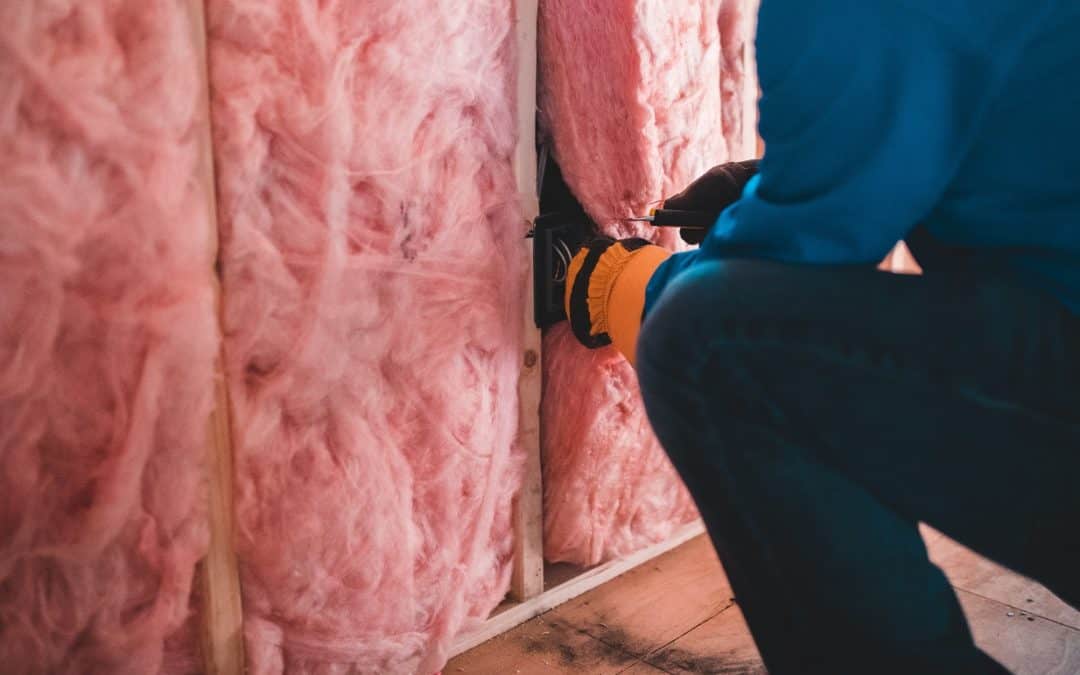The EPA estimates that about 49% of a residential building’s energy costs are devoted to heating and cooling. That means that if we could somehow eliminate the need for heating and cooling, we would cut the energy costs of every residential building by about half.
Insulation can play an incredibly important role in this mission. While active (energy-consuming) heating and cooling may be impossible to eliminate in some regions, the need for active climate control can be limited through insulation. In this piece, we’re going to examine how upgrading the insulation of your roof and walls can lower your energy costs.
The basics of insulation
Insulation works by limiting heat transfer. It’s important to understand that heat transfer works in both directions – in the summer, heat will seep into your home, while in the winter, heat will seep out of your home. Insulation impedes this transfer – that means it keeps your home warmer in the winter and cooler in the summer.
There are a variety of different types of insulation, ranging from modern cell foam insulation to old-school fiberglass batts. The type of insulation you’ll use will depend on your home, the climate in your region, and how much you’re willing to spend.
Insulation is measured by R-value – the higher the R-value, the better the insulation is at decreasing heat transfer.
Understanding the building envelope
The building envelope is the technical term for all the parts of your home that keep the outdoor climate separate from the indoor climate. Windows, doors, and foundation are all part of the building envelope – as are, most obviously, your roof and walls.
When any part of the building envelope allows for more heat transfer than any other, the overall effectiveness of your building envelope drops considerably. That’s why if you feel one hot spot in your home in the summer (or cold spot in the winter), it’s a good sign you need more insulation – heat is seeping through that point.
That’s why it’s important to check every part of your home for weak points. Insulating basement walls is almost as important as insulating the walls on your main floor, or your attic.
Over-insulating: a bold new building strategy
There’s a growing trend in the world of sustainable design – over-insulation. The idea is simple. There are recommended (and required) R-values for different climates around the world. Over-insulators use R-values that far exceed the recommended values.
Why? Because more insulation truly is better. By significantly impeding heat transfer, over-insulated homes consume much less energy.
We can use information from Passive House, a low-energy, high-insulation standard, for reference. In Germany, most Passive House constructions use about 13 kWh/m²a of energy, while other low energy homes use about 65 kWh/m²a.
That’s a massive decrease in energy consumption – the advantage of hyper insulation for your roof and walls.
The complexities of energy costs
Of course, calculating how much that energy costs is much more complicated – it depends on your source of energy, your climate, your methods of heating and cooling, how your home is constructed, and so much more.
For these reasons, it’s impossible to give a clean answer to the question “how much money will I save by insulating my walls and roof?”. These questions get complicated even further when you consider how much insulation (in terms of R-value) you use will also impact how much you might save.
These complexities can all be boiled down to one truth, however – by insulating your home more, you will save on energy. That is, if you do it properly.
Roof and wall insulation tips
If your roof is damaged, it might leak. And leaky roofs can do serious damage to insulation. As we’ve learned, any uninsulated areas in your building envelope can seriously compromise its integrity, and lead to a substantial increase in heat transfer.
That’s why you need to fix a leaking roof if you want to make the most out of your insulation. The same rule goes for any cracks in your walls. For the maximum R-value to be achieved, your walls and roof need to be leak-free.
A note on hyper-insulation, too: limiting heat transfer also means limiting air transfer. That can lead to stale air in your home. To avoid this complication, you’ll need a ventilator – an energy recovery ventilator is the best way to go.
Looking for help installing the right insulation for your home – and your climate? You’re in the right place – we’ll help you find the home pro!

Recent Comments